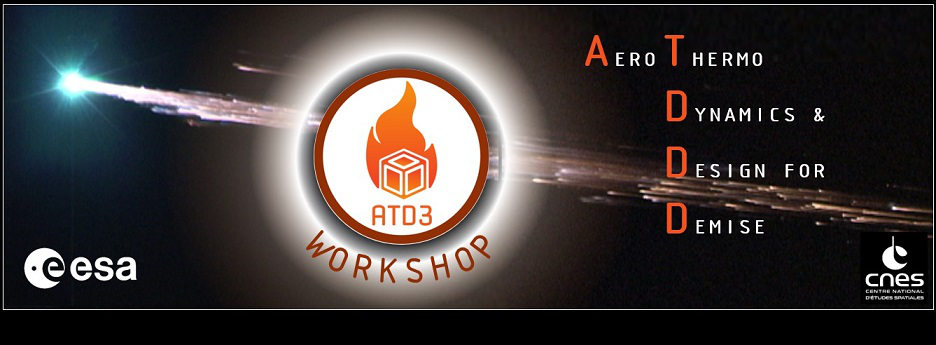Speaker
Description
Nowadays, besides the goal of enabling sustainable and more economical space access, the accumulation of inoperable objects is rising environmental and safety concerns. Various re-entry estimation software is being developed to promote the design of completely demisable spacecraft and hence mitigate the growth of space debris. Such toolkits perform dynamic analysis to compute the states of the re-entering objects, estimate the aerodynamic and aerothermal loads, study the fragmentation, and compute the demise and the ground footprint. These re-entry prediction tools are well suited for single bodies but usually have shortcomings in the analysis of the break-up and dispersion of fragments undergoing mutual interactions due to the complex physics involved.
This research aims to deepen the understanding of fragment interactions by supplying CFD and Design for Demise tools with data on such unaccounted proximal body interactions. In the present work, the aerodynamics of a free-flying ring model interfering with a steady crossflow cylinder (interstage rocket element and fuselage) in Mach 14 cold hypersonic flow has been investigated experimentally in the VKI Longshot facility. The ring model was initially suspended at $90^\mathrm{o}$ incidence upstream to a transversally mounted cylinder. Upon the arrival of the flow, the thin support wires of the ring rupture, allowing the model to fly freely and interfere with the two-dimensional shock generated by the stationary cylinder.
The measurement setup consisted of a set of freestream probes (Pitot pressure, static pressure, and heat-flux) and a schlieren system coupled with a high-speed camera. The transient freestream flow conditions have been computed from the probe data using an elaborate rebuilding technique. High-speed schlieren flow visualization has been performed to capture the motion of the model, and its trajectory and attitude were inferred using a synthetic image fitting algorithm. The analysis of the trajectory yielded the aerodynamic forces and moments, which were normalized with the free-stream dynamic pressure to compute the aerodynamic coefficients. A comparison with previous experimental data of Grossir et al. 2022 (https://doi.org/10.1007/s00348-020-02995-7) and modified Newtonian computations on an interference-free annular model, showed that the interaction with the detached shock wave vastly influences the flight trajectory. The interference induces a notable flownormal velocity even at early stages of the interaction promoting a shock wave surfing configuration.
The current experiment and the obtained results constitute the Test Case 2022 and the associated validation data for the Aerothermodynamics and Design for Demise (ATD3) Working Group.

